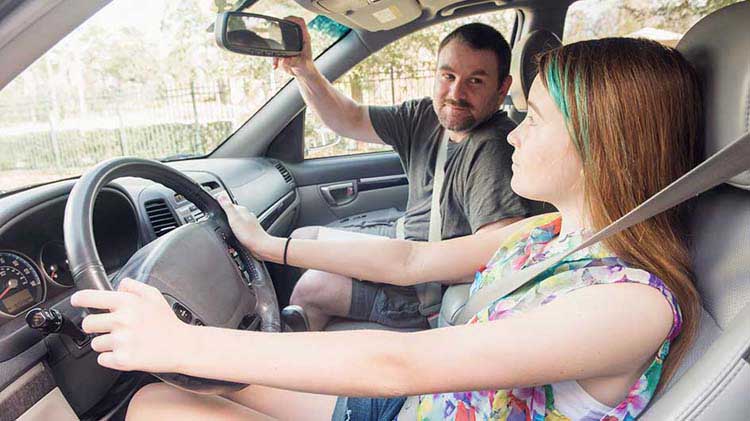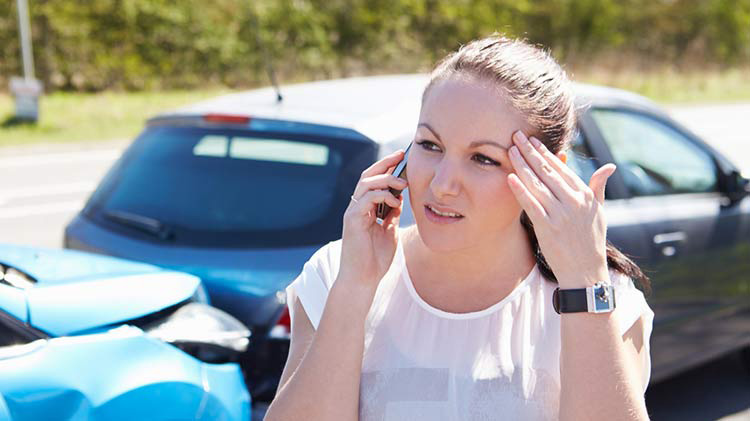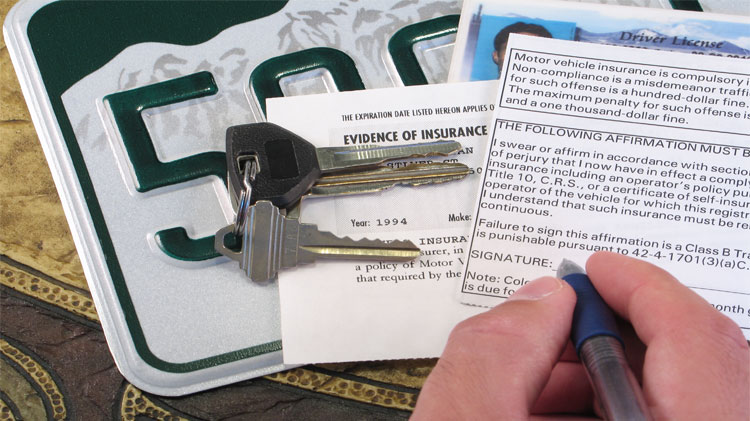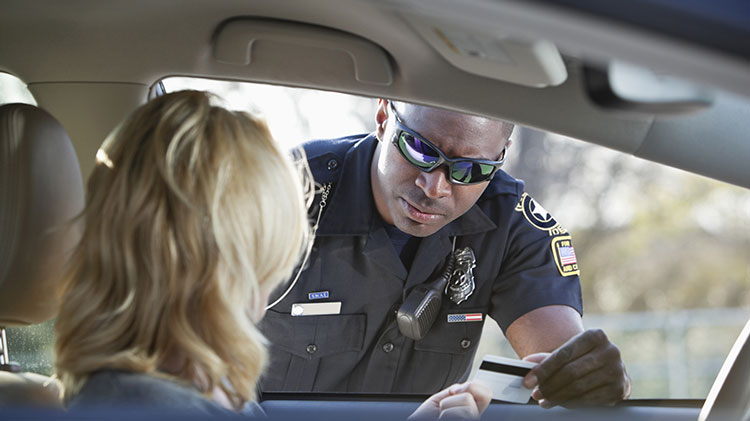Teen driving 101: a step-by-step test of essential driving skills
Before letting your teenager get behind the wheel, consider going over this driver skills checklist.
How do you know if your child is ready to drive?
When it's time to teach your teenager to drive, parents should begin by taking the time to see that their teen is knowledgeable about and comfortable with the vehicle and its controls. Parents can also check with their insurance companies to see if they have programs to help teach a teen to drive. For example, the State Farm® Steer Clear® program is a great way for teen and young adult drivers to improve their driving skills.
Rules of the road refresher
Driving rules and the way students are taught change periodically. If it's been a while since you studied the current rules, it may be good to review your student's materials before instructing them.
Get an auto insurance quote
Want to protect your car?
Start with a tour of the vehicle
Before you hit the road, start by teaching your teen the basics: demonstrate how to adjust the seat along with the side and rearview mirrors. Make any other accommodations that are necessary, such as tilting the steering wheel.
Review the controls and features of the car. Give your teen an education on how each of these works:
- Dashboard controls
- Steering wheel and seat adjustment
- Mirror adjustment
- Turn signals
- Headlights
- Safety features like air bags and seat belts
- Wipers
- Emergency lights
- Parking brake/release
- Starting/turning off the engine
- Gas and brake pedals (especially anti-lock brakes)
- Warning indicator lights on dashboard (such as low fuel, oil, temperature indicator)
Also, show your teen where the registration, insurance card and car manual are located.
Get a feel for the vehicle
The first time your teen drives the car, you might want to start in a more simple location, like an empty parking lot. Have your teen practice applying the gas and brakes, driving straight, turning and backing up.
As you see your teen beginning to master these skills, take note and make the situation a little more complex next time. For example, instead of just stopping and starting, have your teen pull into and out of a parking spot.
It can take several outings to learn how to get from point A to point B, and to figure out how much pressure to apply to the brakes to stop or how far to move the steering wheel to turn.
This is also a good time to remind your teen driver to pay attention to their surroundings:
- Look ahead and to the sides.
- Check mirrors.
- Scan continuously for hazards.
- Teach your teen to keep a clear "safety space" around the car so there's room to react to any hazards. The farther he or she hangs back from the vehicle in front, the better your teen may be able to see what’s ahead. Seeing better and farther can provide extra time to react to changing traffic conditions.
Start in low-speed, low-traffic areas
Once your teen is comfortable with the basic operation of the car, take your training to quiet streets where your teen can practice staying on one side of the road, anticipate cars exiting driveways and learn to pull up to a stop sign.
For the next several lessons, stick to roads that have slower speed limits (under 35 mph). Emphasize that the posted limit is only a guide for an acceptable maximum speed in excellent conditions. Your teen should drive even slower in poor weather, heavy traffic or areas where there are a lot of pedestrians.
Beginner skills checklist
Vary the routes to practice the following:
- Turns: speed and use of signals
- Braking smoothly: gradually slowing to a stop
- Accelerating smoothly: steadily increasing to a safe speed within the posted limit
- Approaching intersections controlled by stop signs or lights
- Determining right of way
- Single-lane and multi-lane roadways (low speeds)
- Changing lanes and how to merge into traffic safely
- Maintaining appropriate speed
- Scanning for and identifying hazards
- Keeping a safe following distance
- Sharing the road with cyclists, pedestrians and school buses
- Driving in a school zone
- Reacting to an approaching emergency vehicle
- Using turning lanes
As your new driver starts to master these skills, pay attention to which ones he or she is confident with. As you both become more comfortable, continue to expose your teen to different times of day, levels of traffic and weather conditions on familiar roads.
At this point, your teen has mastered the basics and needs lots of practice getting used to the road. For the next several hours of driving practice, stick to low-speed, low-traffic roads. Try to take a different route each time so that your teen is getting the variety needed to become a safe driver. Also consider working with a driving instructor.
Driving on the highway
Driving on a multi-lane highway for the first time can be scary. Start your teen out by driving at quieter times of the day to practice merging into traffic, staying in the lane and using higher speeds and safe following distances without the added stress of rush-hour traffic. Once you are both comfortable with that, gradually move on to busier traffic situations.
Before heading out onto the highway, prepare your new driver for:
- Higher speeds that call for longer stopping distances
- The need to check blind spots before changing lanes
- Driving near large trucks
- Anticipating interchanges by reading signs
- Allowing a "safety space" around you, in the event you need to pull off the road for another vehicle or debris
- Looking for traffic stopped or slowing ahead
Advanced skills checklist
Skills a new driver needs to master while in high-speed, high-traffic conditions:
- Merging into traffic
- Identifying road signs and exits
- Navigating toll booths
- Passing and being overtaken
- Maintaining proper speed
- Being courteous to others
- Keeping a safe following distance
Advanced challenges
Difficult driving conditions can be dangerous for all drivers, but are extremely hazardous for new drivers. After you and your teen feel confident with his or her ability to handle each driving situation in daylight and good weather, have them practice driving in different scenarios like bad weather, different light during the day and night or with other people in the car. Here are some driving experiences to offer your teenager so they are better prepared when encountering unfamiliar situations:
- Bad weather. Drive with your teen in bad weather like rain, windy days, fog, light snow or sleet. Your teen may be able to gain experience in the case the car feels different or when they need to use their wipers or defrosting systems in real time.
- Changing lights. As the sun angles up and down in the sky, two things happen to drivers. First, the light can become a hazard as it shines directly into eyes. Second, the hours closer to dawn and dusk have a reduced light level. If you can, accompany your teen on drives to school, for example, or home following an after-school event.
- New passengers and diverse vehicles. Your teen won't always be driving with just you as a passenger, or only in your car. Invite another person or two as third or fourth passengers (as state driving laws allow). If your family owns more than one car, a new driver should gain experience in all of them.
Driver supervision should probably continue until your teen is comfortable with driving in "degraded" or different conditions.
How do I know when my teen is ready to drive alone?
Your instincts are probably the best way to know. Remember, even if your teen is legally old enough to get a license, it's your decision whether he or she is ready.
Questions to consider
- Has my teen had enough practice, in varying conditions, so we are both confident with my teen's ability to handle most situations?
- Has my teen shown the ability to detect hazards and react to them quickly?
- Have I noticed that scanning for hazards has become a habit for my teen?
- Does my teen always wear a seat belt and remind others to do so?
- Does my teen avoid using a cell phone or texting when driving?
- Does my teen wait to pull over to handle distractions or situations that take his or her eyes away from the road? Do I think my teen will act the same way when I'm not in the car?
- Does my teen speed or drive aggressively?
- Will my teen know to pull over if upset, frustrated, or angry?
- Has my teen exhibited responsibility in other areas of his or her life and do I trust him or her to drive my car responsibly?
- Has my teen agreed to the safe driving habits and house rules?
If you think more time and practice is needed before your teen becomes a licensed driver, talk to your teen about the reasons. One way to handle it is to make a deal that your teen may get a license, but you don't want your teen driving alone in certain situations.
From Car Seat to Driver’s Seat™, State Farm believes in educating the public about the importance of vehicle, driver and passenger safety. Learn more about car insurance for teens or contact a State Farm® agent.




